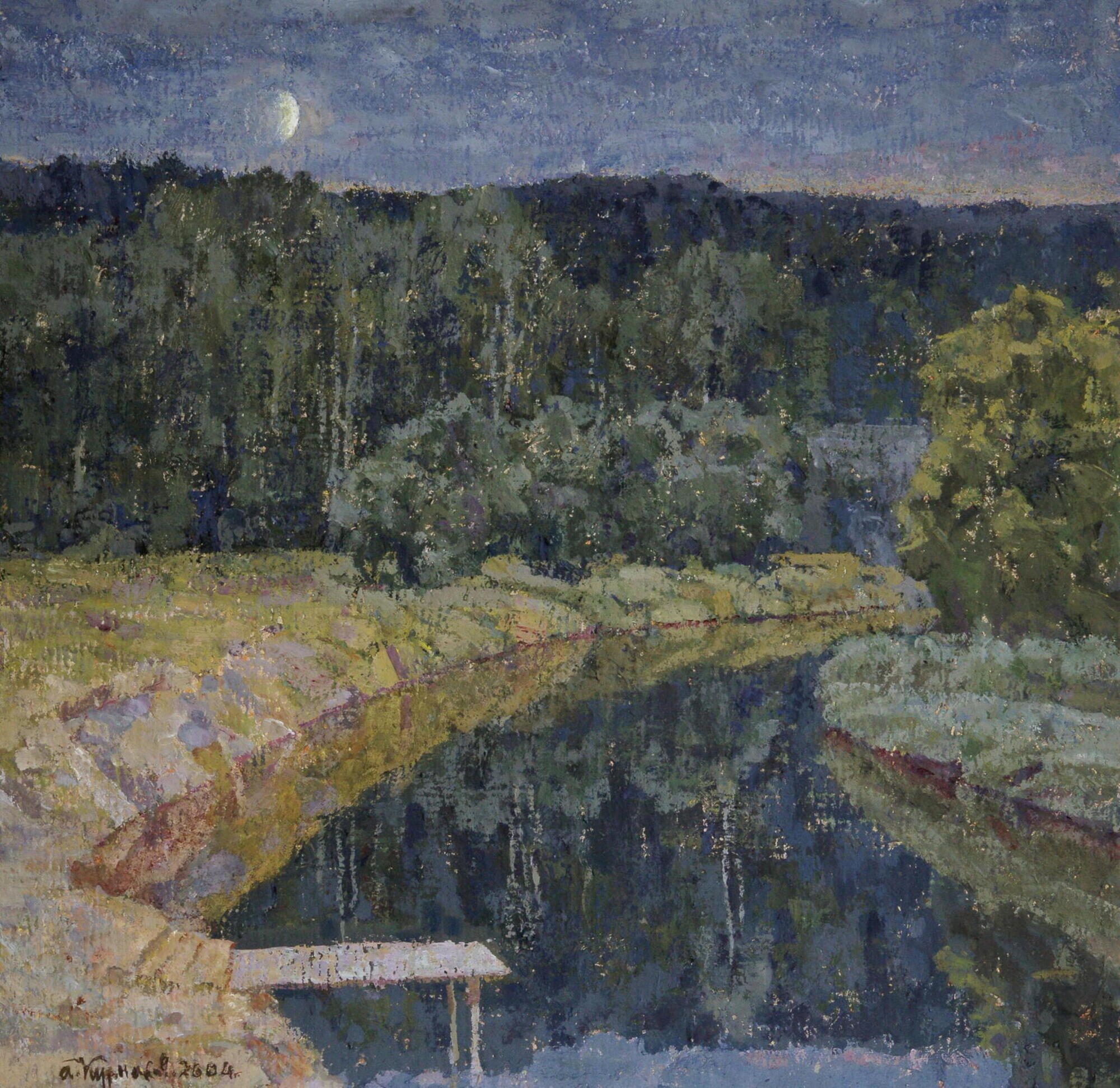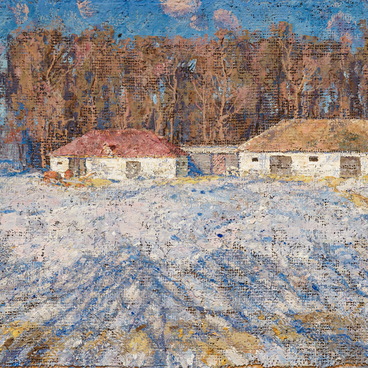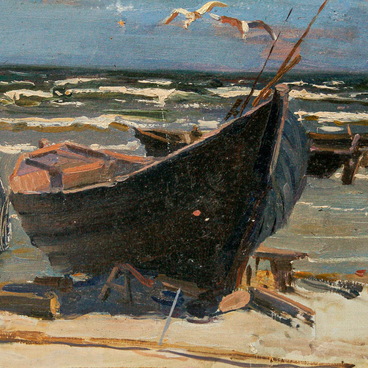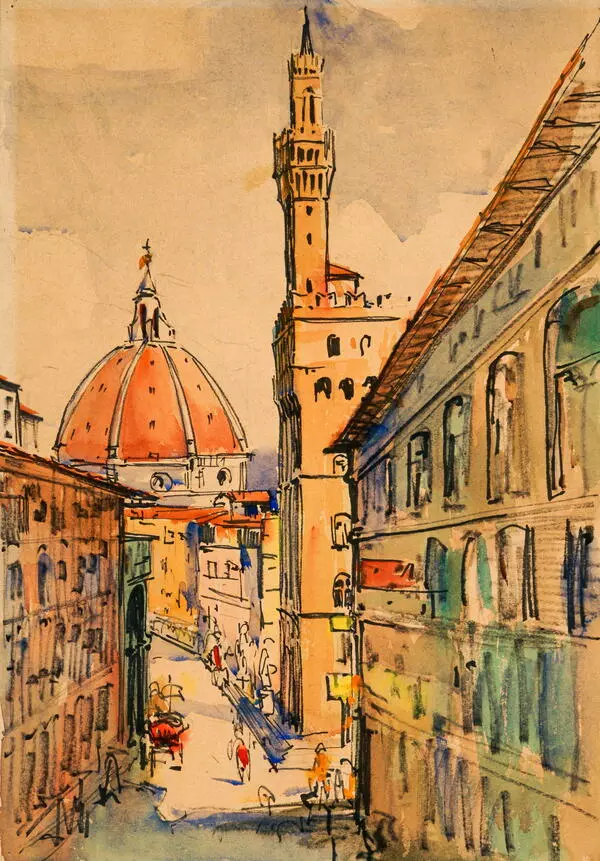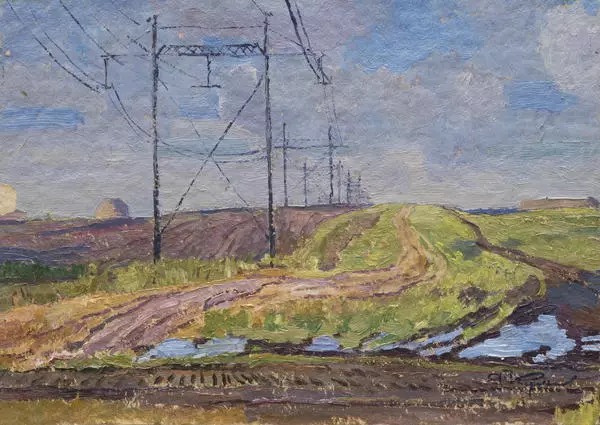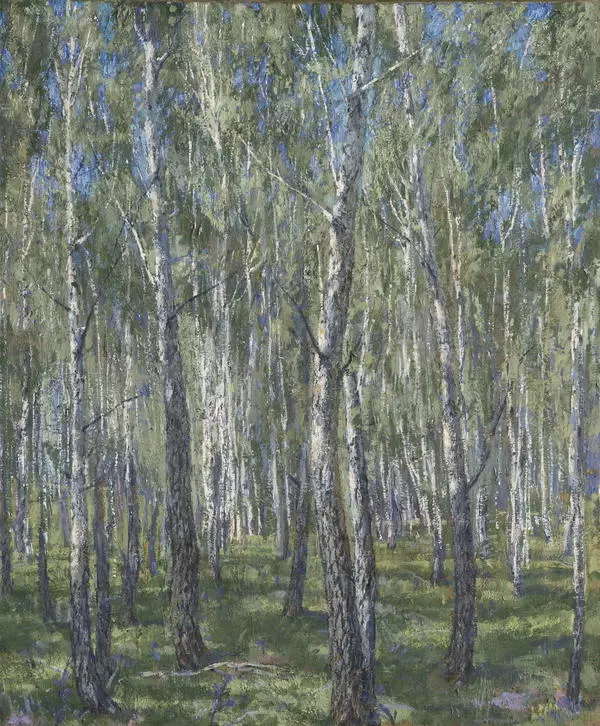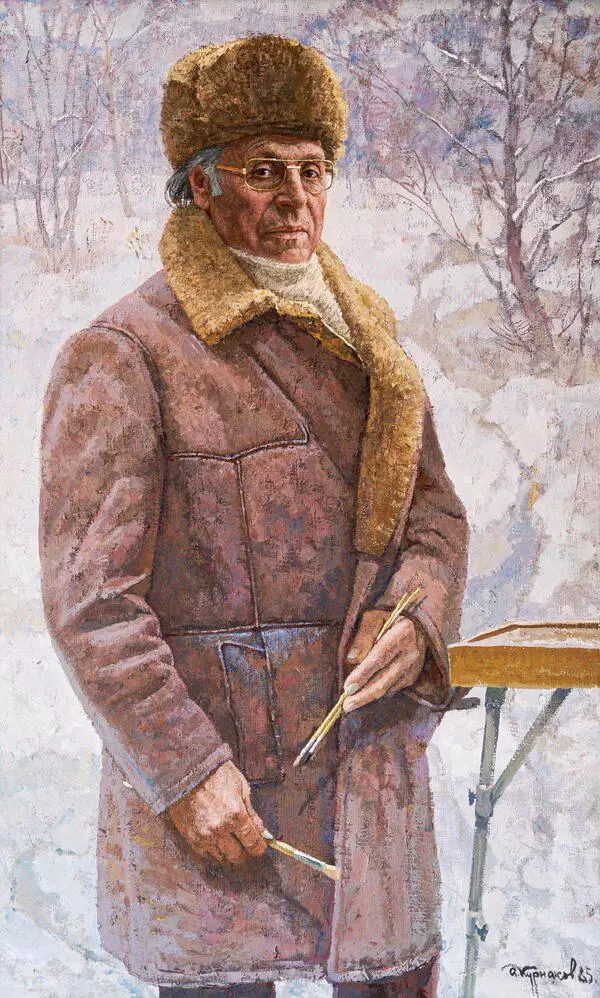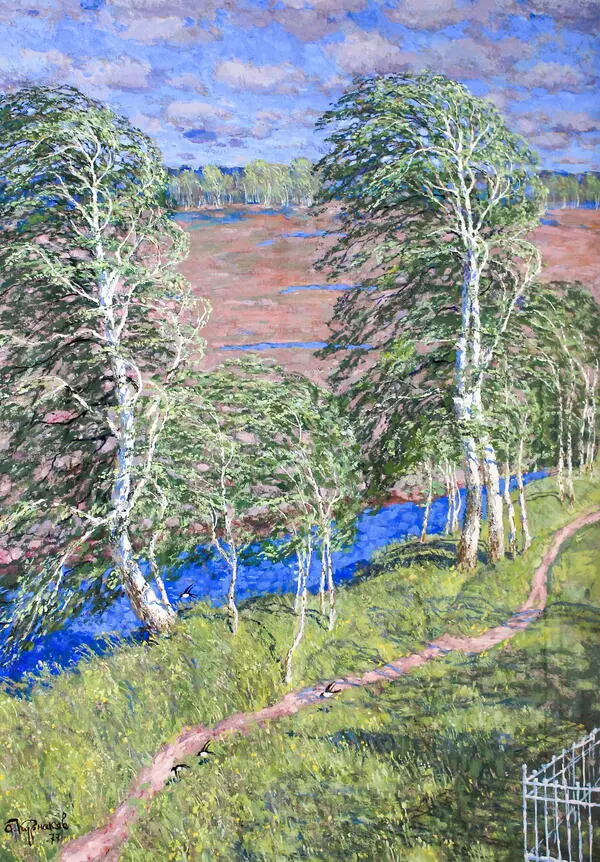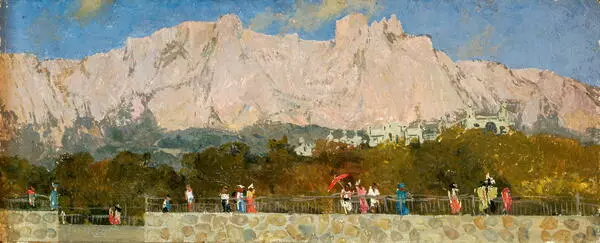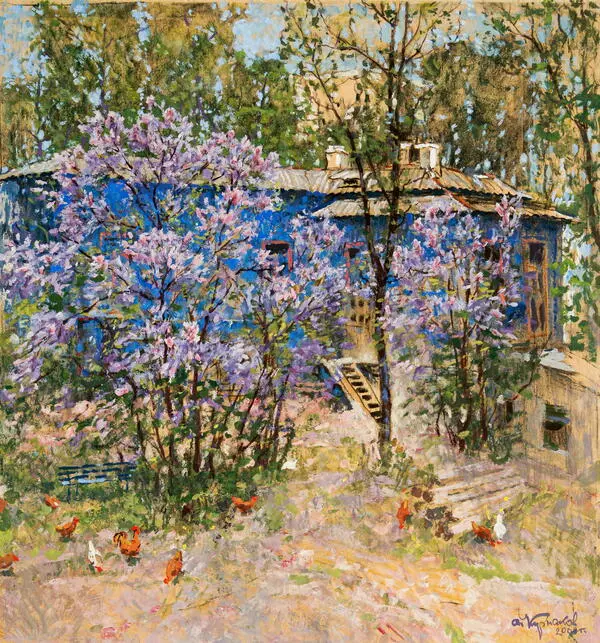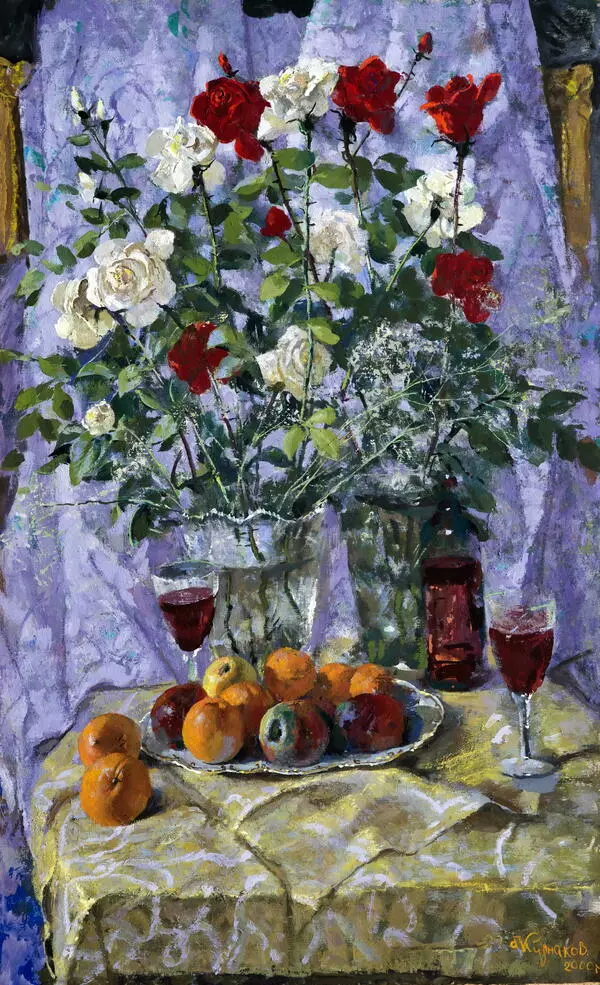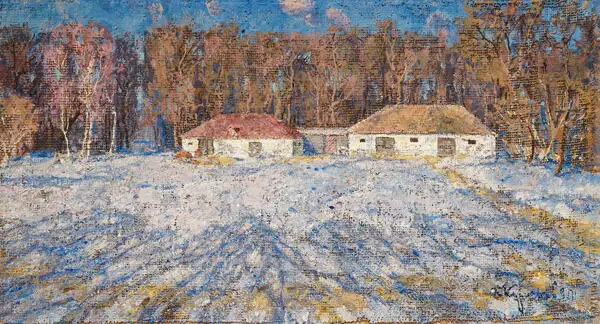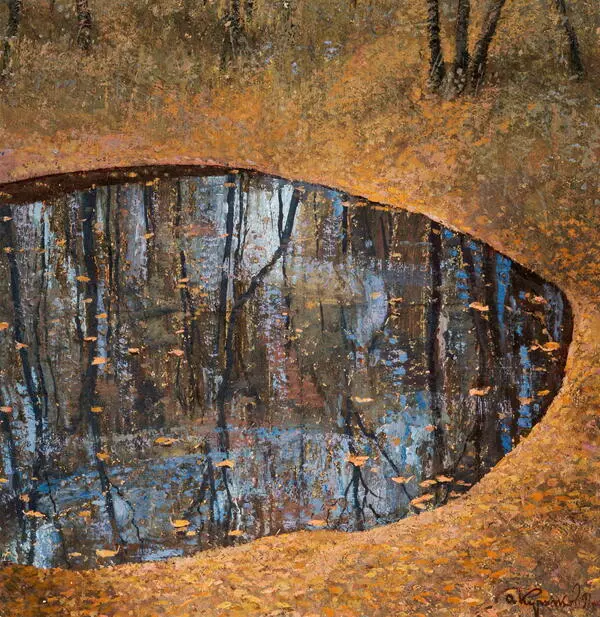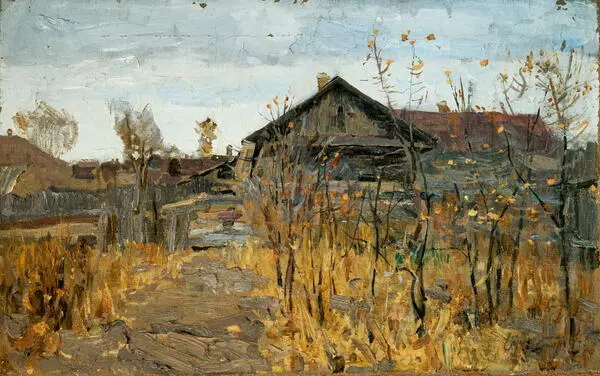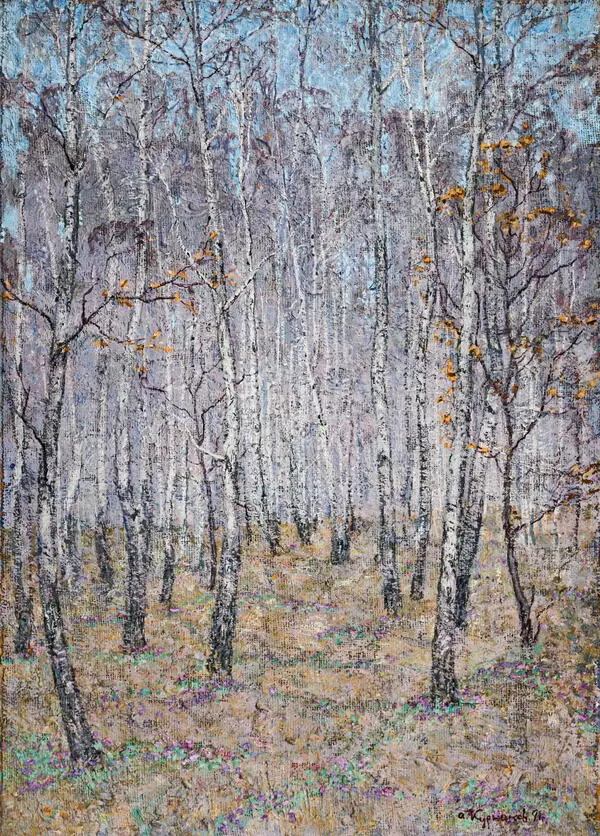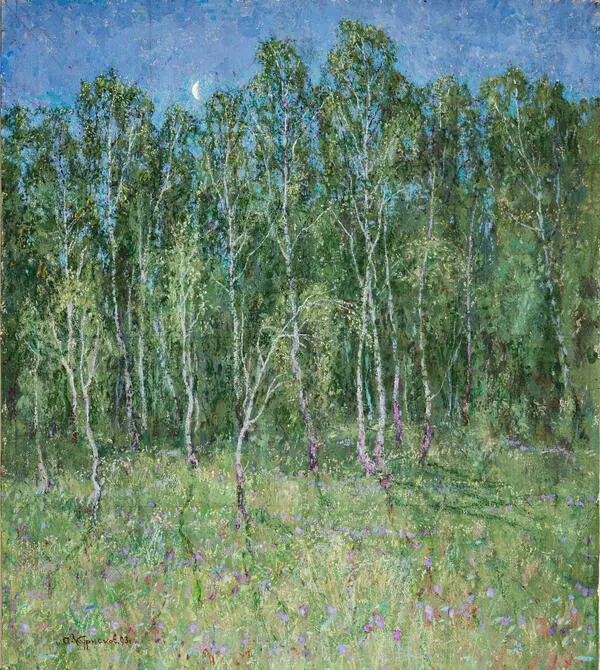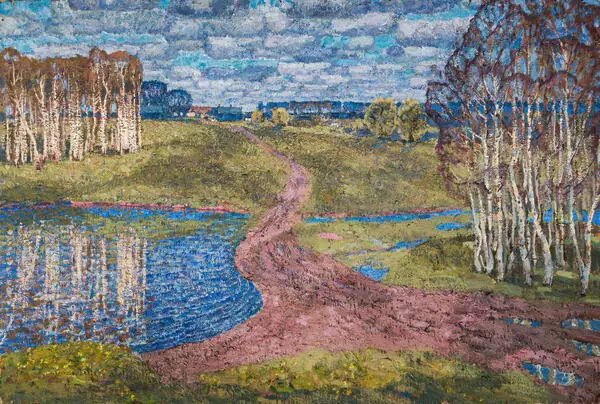The river with the peculiar name of Tson begins in Bryansk Oblast, however, the region only houses about two kilometers of it. The remaining seventy are found in Oryol Oblast — the place of birth, life, and work of the artist Andrey Kurnakov. The picturesque and diverse riverbanks are either densely overgrown with coniferous and deciduous forests or covered with wind-blown meadows and fields.
Researchers do not have a single opinion on the origin of the unusual name of this river. There are different versions. There is a theory that the name comes from the possessive word “Otsna” which means “belonging to the Oka River”. Another theory says that the name was of Slavic origin common for many rivers and sounded like “Desna”, only “de” was removed, and “sna” turned into “son”, later changing to “tson”.
Kurnakov’s works were imbued with poetic feelings. He painted Tson more than once, choosing different times of day and weather, and all of those paintings were invariably strikingly beautiful, profound, and heartfelt.
The artist’s oeuvre is replete with twilight landscapes. Kurnakov started using the evening motif in the 1990s when he was more mature as a painter. The images in the painting “Silence. Tson River” seem ethereal and mysterious with a sense of something touching and musical in them. A similar motif was once used by the great Russian artist Isaak Levitan dubbed “the poet of nature”. Kurnakov’s painting especially resembles Levitan’s work created in 1898 and called “Silence” (housed in State Russian Museum, St. Petersburg) and echoes not only its name but also the overall composition, choice of colors, and atmosphere.
The sun is almost gone with its pink trace brightening the edge of the evening sky and the tree crowns in the background. The painting radiates peace and tranquility. The deep waters of the river are transparent and crystal clear. Their dark surface reflects dormant trees and a strip of the bluish sky, still illuminated by the sun, somewhere over the horizon. The tonal contrasts of the landscape are not very sharp given the twilight lighting, but the artist still manages to outline the trunks and tree crowns, as well as the complex relief of the shaded right bank. The focal point of the painting is concentrated in the lower-left corner — the moon and the dock illuminated by its light.
Researchers do not have a single opinion on the origin of the unusual name of this river. There are different versions. There is a theory that the name comes from the possessive word “Otsna” which means “belonging to the Oka River”. Another theory says that the name was of Slavic origin common for many rivers and sounded like “Desna”, only “de” was removed, and “sna” turned into “son”, later changing to “tson”.
Kurnakov’s works were imbued with poetic feelings. He painted Tson more than once, choosing different times of day and weather, and all of those paintings were invariably strikingly beautiful, profound, and heartfelt.
The artist’s oeuvre is replete with twilight landscapes. Kurnakov started using the evening motif in the 1990s when he was more mature as a painter. The images in the painting “Silence. Tson River” seem ethereal and mysterious with a sense of something touching and musical in them. A similar motif was once used by the great Russian artist Isaak Levitan dubbed “the poet of nature”. Kurnakov’s painting especially resembles Levitan’s work created in 1898 and called “Silence” (housed in State Russian Museum, St. Petersburg) and echoes not only its name but also the overall composition, choice of colors, and atmosphere.
The sun is almost gone with its pink trace brightening the edge of the evening sky and the tree crowns in the background. The painting radiates peace and tranquility. The deep waters of the river are transparent and crystal clear. Their dark surface reflects dormant trees and a strip of the bluish sky, still illuminated by the sun, somewhere over the horizon. The tonal contrasts of the landscape are not very sharp given the twilight lighting, but the artist still manages to outline the trunks and tree crowns, as well as the complex relief of the shaded right bank. The focal point of the painting is concentrated in the lower-left corner — the moon and the dock illuminated by its light.
